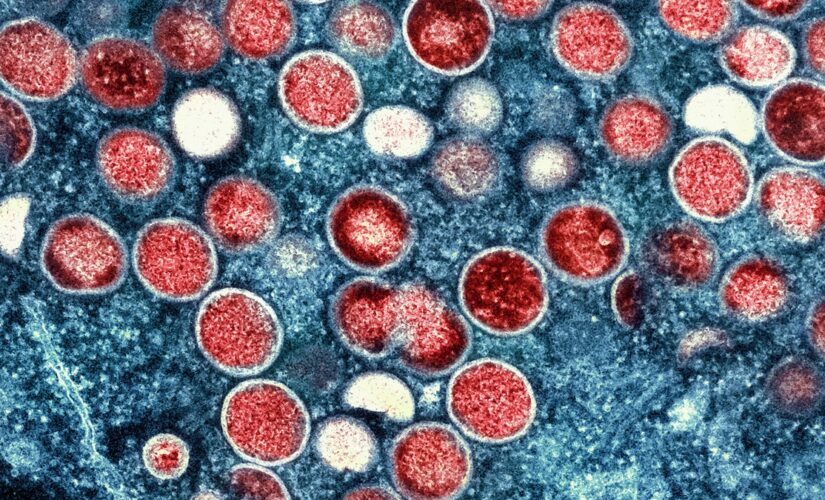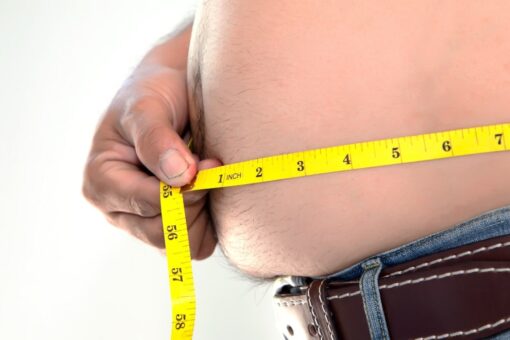Monkeypox is probably not going away any time soon, according to some U.S. health officials, The Associated Press is reporting.
While the disease’s spread is slowing, the monkeypox virus is so widespread that elimination is unlikely, said the Centers for Disease Control and Prevention (CDC).
That conclusion was contained in a recent CDC report — and on Friday, Marc Lipsitch, director of science at the agency’s disease-forecasting center, echoed it.
SUDAN REPORTS 5 MORE MONKEYPOX INFECTIONS, STOKING FEARS OF LARGER OUTBREAKS
Lipsitch hesitated to say that monkeypox is permanently here to stay, but he said it stands to be a continuing threat for the next few years, the AP noted.
“It’s in many geographic locations within the country” — as well as in other countries, Lipsitch told The Associated Press.
Test tubes labeled “monkeypox virus positive and negative” are seen in this illustration taken on May 23, 2022.
(REUTERS/Dado Ruvic/Illustration)
“There’s no clear path in our mind to complete elimination domestically,” he added.
The virus has mainly spread among gay and bisexual men, though health officials continue to stress that anyone can be infected.
People at risk need to take steps to prevent the spread — and it’s vital that vaccination efforts continue, Lipsitch said.
US outbreak appears to have peaked
CDC director Rochelle Walensky said recently that she was cautiously optimistic about a decline in the growth of new monkeypox cases, but that some areas of the country were still experiencing a rise in infections.
She also said during a White House briefing in mid-September that the agency was taking steps to address racial and ethnic disparities in distribution of monkeypox vaccines.
The average number of daily cases being reported in the U.S. — fewer than 150 — is about a third of what was reported in mid-summer.
The recent CDC report did contain some good news, the AP said.
The U.S. outbreak seems to have peaked in early August.
The average number of daily cases being reported — fewer than 150 — is about a third of what was reported in the middle of the summer.
MONKEYPOX: WHAT YOU MUST KNOW ABOUT THE VIRUS — AND HOW TO PROTECT YOURSELF
Officials expect the decline will continue for at least the next several weeks, the AP said this week.
Lipsitch attributed the good news to increasing vaccinations, cautious behavior by people at risk and infection-derived immunity in the highest risk populations.
Dr. Tom Inglesby, director of the Johns Hopkins Center for Health Security, agreed it’s unlikely that the spread of monkeypox will stop in the U.S. anytime soon, but he said it’s still possible in the long term.
This image provided by the National Institute of Allergy and Infectious Diseases (NIAID) shows a colorized transmission electron micrograph of monkeypox particles (red) found within an infected cell (blue), cultured in the laboratory that was captured and color-enhanced at the NIAID Integrated Research Facility (IRF) in Fort Detrick, Md.
(NIAID via AP, File)
If domestic transmission were stopped, infections may still continue if people catch the virus while traveling internationally, he said.
But the fact that cases are declining makes it appear that “we’ve turned a real corner.”
MONKEYPOX IN AMERICA: WHO’S AT RISK AND WHY?
“The efforts underway are succeeding, and should be continued, if not intensified,” he told the AP.
With case numbers going down, this is a good time for local health departments to take a new stab at doing intensive contact tracing to try to stop chains of transmission, he said.
History of monkeypox
Monkeypox is endemic in parts of Africa, where people have been infected through bites from rodents or small animals, but it wasn’t considered a disease that spreads easily among people until May, when infections emerged in Europe and the U.S., said The Associated Press.
More than 97% of the U.S. cases are men, the AP noted.
The disease was first discovered in Africa in 1958 when monkeys started to develop pox-like symptoms; however, the exact source of the infection remains unknown.
There have been more than 67,000 cases reported in countries that have not historically seen monkeypox. The U.S. has the most infections of any country — more than 25,600. One U.S. death has been attributed to monkeypox.
WHO DECLARES MONKEYPOX A GLOBAL HEALTH EMERGENCY
More than 97% of the U.S. cases are men, the AP noted. The vast majority have been men who reported recent sexual contact with other men.
Though cases have been declining, the proportion of new cases that have information about recent sexual contact is also down, officials said.
That’s causing a growing blind spot about how the virus may be spreading, Lipsitch noted.
What is monkeypox?
Monkeypox is a zoonotic virus capable of spreading from animals to humans and is in the same disease category as smallpox.
In 2022, monkeypox became a part of an ongoing viral outbreak, with most cases starting to cluster in the United Kingdom after traveling to Nigeria.
In this photo provided by the San Francisco AIDS Foundation, a person receives the monkeypox vaccine at the San Francisco AIDS Foundation Monkeypox vaccine clinic in San Francisco.
(San Francisco AIDS Foundation via AP)
There are two monkeypox types: the West African version and the Central African version.
Typically, an animal spreads the disease by biting or scratching a human or if an individual consumes infected meat.
Transmission from human to human is the most common way the disease has spread throughout the outbreak.
Symptoms include fever, swollen lymph nodes and a rash typically with blisters that crust.
Typically this transmission occurs via exposure to contaminated items, bodily fluid, and small droplets. Monkeypox may also spread through an airborne route in closed areas.
The disease can spread to others until all the lesions have disappeared or fallen off. An individual can see if they are positive for the disease by testing a lesion.
What are the symptoms of monkeypox?
Symptoms include fever, swollen lymph nodes and a rash typically with blisters that crust.
The World Health Organization and the CDC state the time from exposure to physical symptoms starts within two to four weeks.
Mild disease symptoms, such as muscle pains and fevers, are not common in all outbreaks and may vary worldwide.
LONELINESS AND UNHAPPINESS CAN AGE US FASTER THAN SMOKING: NEW STUDY
Children, pregnant women or individuals with compromised immune systems may experience severe symptoms.
Is there a cure for monkeypox?
There is no known cure for monkeypox, and in severe cases, the WHO recommends using antiviral vaccines such as vaccinia immune globulin (VIG), which was used to treat smallpox.
Other smallpox and monkeypox vaccines have been approved but currently have limited availability.
CLICK HERE TO GET THE FOX NEWS APP
Medical experts recommend those with monkeypox isolate themselves and inform others they may have been in contact with — as well as keep well-hydrated.
The Associated Press contributed reporting to this article.




